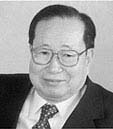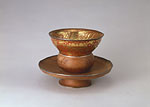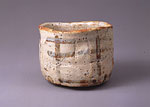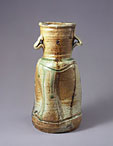|
|
|
|
|
||||||||||
HOME > the spirit of the brabd nihonbashi-bijin > Aesthetics of Iki–Natives of Edo
Intelligence naturally generated from beneath the surface of women and the dignity produced by intelligence develops in Nihonbashi-bijin, Japan Beauty from Edo-Tokyo, who is beautiful in body and mind. And as such, the Nihonbashi-bijin brand was born from the wisdom passed down from the Edo period. So we asked Mr. Tsunehiko Yoshi-i, the general manager of Mitsui Bunko, the largest business archives in Japan, for an explanation of the authentic traditions passed down to Nihonbashi.
Miyabi and Kirei-sabi for Nihonbashi-bijin

Mr. Tsunehiko Yoshi-i
Executive Director and General Manager of Mitsui Bunko
Executive Director and General Manager of Mitsui Bunko
Tradition of Miyabi
The history of Mitsui House was started by the founder Takatoshi Mitsui, who opened the Echigoya dry goods store at the main street of Edo (Tokyo) together with a firm for buying in Kyoto 300 years ago (in 1673). Echigoya then became Mitsukoshi, which is there now as the largest department store in Japan.
I can say that the authentic sense of tradition handed down in Mitsui families comprises two elements, i.e, Miyabi and Kirei-sabi. Miyabi is a sense of elegance in the culture of Kyoto that developed through the long history from the Heian Period. The Mitsui families, who were called Edo-dana-mochi kyo-akindo meaning a Kyoto merchandiser with a store in Edo, had a tradition of esteeming miyabi, the elegance of Kyoto. Especially Takasuke Mitsui, the sixth generation of the Mitsui-Kita family who played an active part in the late Edo period, should be noted. He was a highly educated man and played an important role in connecting Edo with Kyoto, or the culture of daimyos (feudal lords) with that of townspeople. For example, he was friends with Harutomi Tokugawa, the feudal lord of Kisyu (the home of the Mitsui House) through chanoyu, the tea ceremony. Thus, the authentic miyabi, which is just represented by ceramic utensils used for the tea ceremony created by Eiraku, became one of the features in the culture inherited by Mitsui House.
The history of Mitsui House was started by the founder Takatoshi Mitsui, who opened the Echigoya dry goods store at the main street of Edo (Tokyo) together with a firm for buying in Kyoto 300 years ago (in 1673). Echigoya then became Mitsukoshi, which is there now as the largest department store in Japan.
I can say that the authentic sense of tradition handed down in Mitsui families comprises two elements, i.e, Miyabi and Kirei-sabi. Miyabi is a sense of elegance in the culture of Kyoto that developed through the long history from the Heian Period. The Mitsui families, who were called Edo-dana-mochi kyo-akindo meaning a Kyoto merchandiser with a store in Edo, had a tradition of esteeming miyabi, the elegance of Kyoto. Especially Takasuke Mitsui, the sixth generation of the Mitsui-Kita family who played an active part in the late Edo period, should be noted. He was a highly educated man and played an important role in connecting Edo with Kyoto, or the culture of daimyos (feudal lords) with that of townspeople. For example, he was friends with Harutomi Tokugawa, the feudal lord of Kisyu (the home of the Mitsui House) through chanoyu, the tea ceremony. Thus, the authentic miyabi, which is just represented by ceramic utensils used for the tea ceremony created by Eiraku, became one of the features in the culture inherited by Mitsui House.
 Akaji-kinrande-hououmon-tenmoku (A tea bowl used on a special stand or Tenmoku-dai, with red-base, multi-colored motifs and gold in which the pattern of phoenix is included) by Wazen Eiraku
Akaji-kinrande-hououmon-tenmoku (A tea bowl used on a special stand or Tenmoku-dai, with red-base, multi-colored motifs and gold in which the pattern of phoenix is included) by Wazen Eiraku
One of the tea bowls representing the miyabi in the Mitsui House, which was used for offering tea to the Meiji Emperor in 1887.
 National treasure: Shino-jawan Mei-unohanagaki (A tea bowl in the Shino-style Japanese pottery, on which the name Unohanagaki is inscribed)
National treasure: Shino-jawan Mei-unohanagaki (A tea bowl in the Shino-style Japanese pottery, on which the name Unohanagaki is inscribed)
The tea bowls of Japanese make designated as a national treasure are only this one and and Hakuraku-jawan by Koetsu Honami.
Tradition of Kirei-sabi
There may be many people who know wabi and sabi, the concept we think of as the features of Japanese beauty, however, perhaps they don ユt know the term kirei-sabi. Kirei-sabi, which may be translated as メquiet, discreet beauty, モ has been passed down by the Enshuryu School of Tea established by Enshu Kobori, who taught tea to the Shogunate Tokugawa family, which is said to be easy to understand for anybody. And Mitsui families came to love kirei-sabi, which features discreet beauty in spite of its brilliant colors from the end of the Edo period, continuously valuing the kirei-sabi highly later as well (Meji, Taisho and Showa Periods).
In the Mitsui-Muromachi family, high quality tea utensils, especially fine ones expressing kirei-sabi, which followed the authentic sense of Enshu, were collected from the time of the tenth generation of the family, Takayasu Mitsui. One of them is a tea bowl called shino-jawan on which the name Unohanagaki is inscribed. It is one of two tea bowls of Japanese make designated as a national treasure, a very precious antique.
The tea utensils collected by Takahiro Mitsui, the 12th generation who inherited the tradition, also thoroughly reflect the stylish beauty of kirei-sabi. He, as well as Takayasu, maintained a friendship with the Kobori family through chanoyu. I think a flower vase named Narihira by his wife Shinako also represents the kirei-sabi inherited by the Mitsui House.
There may be many people who know wabi and sabi, the concept we think of as the features of Japanese beauty, however, perhaps they don ユt know the term kirei-sabi. Kirei-sabi, which may be translated as メquiet, discreet beauty, モ has been passed down by the Enshuryu School of Tea established by Enshu Kobori, who taught tea to the Shogunate Tokugawa family, which is said to be easy to understand for anybody. And Mitsui families came to love kirei-sabi, which features discreet beauty in spite of its brilliant colors from the end of the Edo period, continuously valuing the kirei-sabi highly later as well (Meji, Taisho and Showa Periods).
In the Mitsui-Muromachi family, high quality tea utensils, especially fine ones expressing kirei-sabi, which followed the authentic sense of Enshu, were collected from the time of the tenth generation of the family, Takayasu Mitsui. One of them is a tea bowl called shino-jawan on which the name Unohanagaki is inscribed. It is one of two tea bowls of Japanese make designated as a national treasure, a very precious antique.
The tea utensils collected by Takahiro Mitsui, the 12th generation who inherited the tradition, also thoroughly reflect the stylish beauty of kirei-sabi. He, as well as Takayasu, maintained a friendship with the Kobori family through chanoyu. I think a flower vase named Narihira by his wife Shinako also represents the kirei-sabi inherited by the Mitsui House.

Iga-mimitsuke-hanaire Mei-narihira (A Iga-style flower vase with two handles, on which the name Narihira is inscribed)
Narihira was named by Shinako, the wife of Takahiro Mitsui.
Collection from Mitsui Memorial Museum
Profound sophistication
The tradition of kirei-sabi and miyabi was imported to Edo and has been passed down to modern times. If you view those antiques after understanding the background, your insight will deepen further. The sense of authentic in the collection inherited in the Mitsui Memorial Museum was fostered by the high sensibility and intelligence of the people in the Mitsui family generation after generation. Each item in the collection has a profound taste and sophisticated beauty. I hope that the women of Nihonbashi-bijin who are beautiful in body and mind will see the excellent collection so that they can hone their inner beauty in order to shine further.
The tradition of kirei-sabi and miyabi was imported to Edo and has been passed down to modern times. If you view those antiques after understanding the background, your insight will deepen further. The sense of authentic in the collection inherited in the Mitsui Memorial Museum was fostered by the high sensibility and intelligence of the people in the Mitsui family generation after generation. Each item in the collection has a profound taste and sophisticated beauty. I hope that the women of Nihonbashi-bijin who are beautiful in body and mind will see the excellent collection so that they can hone their inner beauty in order to shine further.
|



